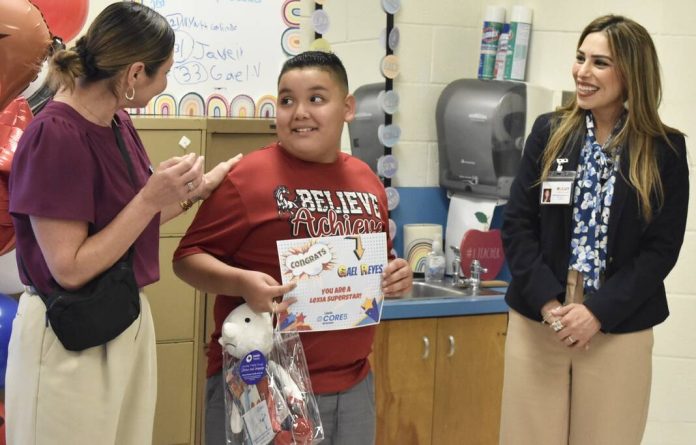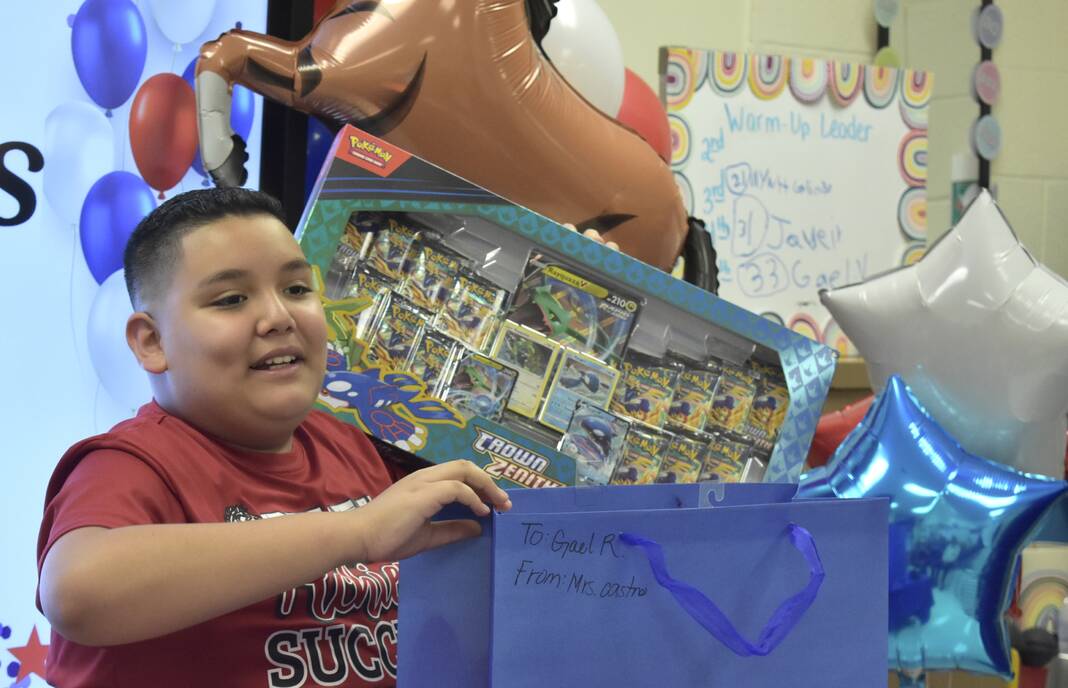
|
Only have a minute? Listen instead
Getting your Trinity Audio player ready...
|
McALLEN — With October marking Learning Abilities and Dyslexia Awareness Month, the school district’s efforts here to provide crucial assistance to dyslexic students is reaping the rewards through a combination of support from trained individuals and an emphasis on student-teacher collaboration.
According to the International Dyslexia Association, dyslexia is a language-based learning disability with a cluster of symptoms. It results in people having difficulties with specific language skills such as spelling, writing and pronouncing words.
Gael Reyes, a fifth grader with dyslexia at Theodore Roosevelt Elementary, is proof that a support system and individual effort makes a difference.
On Wednesday, Reyes celebrated the passing of an elementary leveled intervention program called Lexia Core5 Reading almost a full year ahead of schedule.
Lexia Core5 Reading is a program that accelerates the development of literacy skills for students.
Christian Quintanilla, first year director of the Dyslexia/504/RTI Services at McAllen ISD, said the program is a series of sessions and lessons teaching the five components of reading and helping the students achieve their skills.
“It’s a blended program with a dyslexia teacher,” Quintanilla said. “The teacher is able to zero in on those areas of need and continue supporting the students so they can progress in the program. And so as you can see here at this school, one of our students completed the program early on, a whole year before going to middle school.”
Aside from having trained teachers to provide dyslexia instruction, the district also invested in the training for 11 cognitive academic language therapists (CALT) for a total of 12, primarily at the elementary level.
A CALT specializes in helping people with language-based learning disabilities such as dyslexia, to acquire language skills to read, write and spell.
Pending two more CALTS by the end of the year, the training is an intensive two-year program that includes 200 hours of classroom instruction, 700 hours working with students and passing an exam that covers all areas of multi-sensory teaching.

Celebrating the accomplishments with a pizza party with his classmates, current and previous teachers, his parents and a grandparent in attendance, Reyes said he worked hard for the achievement.
“I feel happy for the celebration because I actually worked for it,” he said “And it inspires other kids below me to work harder.”
Elida Reyes, the mother of Gael, said he enjoys Pokemon, video games and hanging with friends. But for the last couple of months, she said her son really focused on completing the program early due to his competitive nature.
“Since the year started he would work (on the program) every day,” Elida said. “It would be like nine or ten at night and he was still there.”
Being involved in the program since second grade, Elida said she has two other children in the district that have dyslexia.
“I think it’s really good because it motivates the kids and it’s something for us to be proud of,” she said about the celebration. “They don’t leave them behind because they’re dyslexic … with the help from everyone at school and everything that goes on, they come out really good.”
Eilda added that she appreciated that Gael’s past teachers were in attendance.
“All his teachers that since he started, were here with him, supporting him,” she said.
Bianca Castro, Gael’s dyslexia specialist, bought him some Pokemon cards for his achievement.
Castro works with the students by tailoring a program based on their reading level.
“They take a pre-placement test before starting the program to see where they’re leveled at … A lot of our kids that come to us are below grade level, and we make sure that we work with them and we close those gaps.” she said.
Castro has about 20 students she works with at the elementary with another dyslexia specialist, Denise Rodriguez, having about another 20.
“When he started with us, he was below grade level reading at a first grade reading level as a second grader and now he’s a fifth grader reading above grade level, doing sixth grade material,” Castro said. “It’s a big accomplishment. It’s like that seed that you flourish and it grows to be a flower. So he’s one. And a lot of our students are set to finish the program by the end of the year.”



